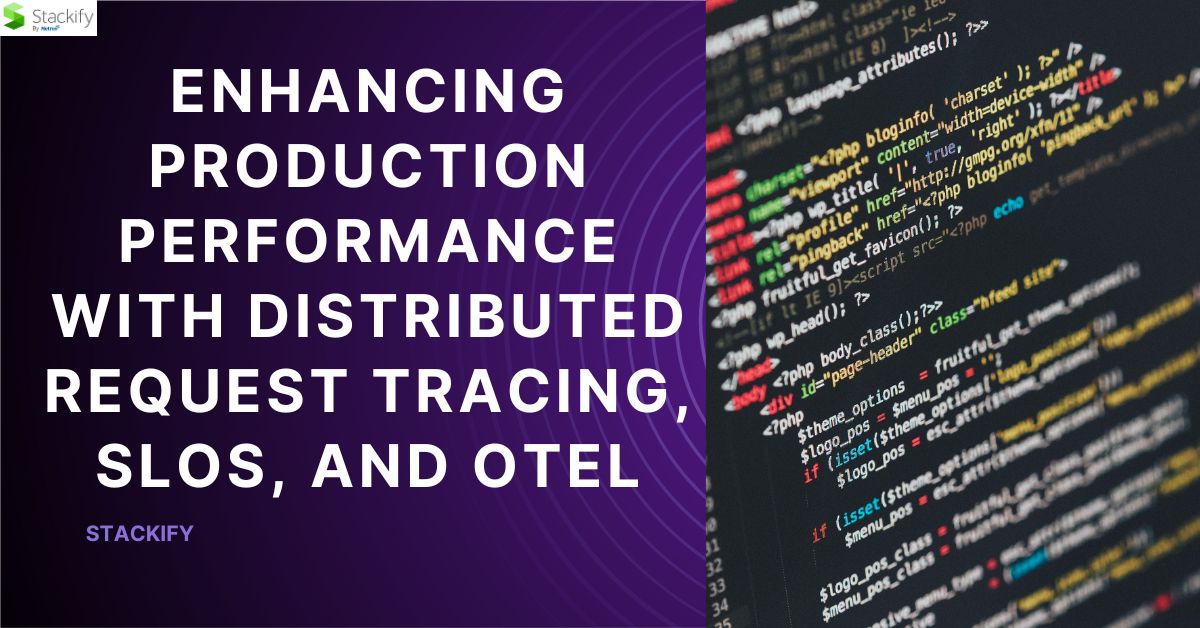Enhancing Production Performance with Distributed Request Tracing, SLOs, and OTEL

In today’s fast-paced digital landscape, ensuring optimal performance of your production systems is paramount. Performance testing, distributed request tracing, Service Level Objectives (SLOs), and OpenTelemetry (OTEL) play crucial roles in achieving this goal. In this blog, we’ll explore these concepts and their significance in maintaining robust, high-performing applications.
Performance Testing in Production
Performance testing in a production environment is a proactive approach to identify and mitigate performance bottlenecks before they impact end-users. It involves simulating real-world user interactions and analyzing system behavior under various loads, such as high traffic, concurrent users, or data volumes.
Effective performance testing helps to:
- Identify performance bottlenecks.
- Ensure consistent response times.
- Discover scalability limits.
- Validate system reliability under stress.
By conducting performance tests in production, you can ensure your application’s readiness to handle peak loads, reducing the risk of downtime and user dissatisfaction.
Distributed Request Tracing
Distributed request tracing is an indispensable tool for monitoring and diagnosing performance issues in complex, distributed systems. It enables you to track the journey of a single request as it traverses multiple services and components, providing insights into latency, error rates, and resource consumption.
Key benefits of distributed request tracing include:
- End-to-end visibility: Trace a request’s path across various microservices.
- Performance optimization: Identify and resolve bottlenecks efficiently.
- Rapid issue identification: Quickly locate the source of problems for faster resolution.
Popular tracing frameworks like Jaeger and Zipkin facilitate the implementation of distributed request tracing and empower you to maintain a high-quality user experience.
What is an SLO?
To know about what is an SLO let’s read this- Service Level Objectives (SLOs) are essential for setting performance expectations and defining what’s acceptable in terms of system behavior. SLOs are specific, measurable goals that help align engineering and operations teams to deliver a consistent user experience.
Key aspects of SLOs:
- Measurable metrics: Define performance objectives with quantifiable measurements.
- User-centric: SLOs focus on the end-user experience, not just infrastructure.
- Continuous monitoring: Regularly track and evaluate SLOs to maintain high performance.
Implementing SLOs ensures that your systems meet the desired level of reliability and performance, helping you prioritize improvements based on user expectations.
What is OTEL?
OpenTelemetry (OTEL) is an open-source project designed to provide observability to cloud-native applications. It standardizes the collection of telemetry data, making it easier to gain insights into application performance and troubleshoot issues in a distributed environment.
Key features of OTEL:
- Instrumentation: OTEL offers libraries and agents to collect telemetry data from various programming languages and frameworks.
- Vendor-agnostic: It allows you to choose the best observability solution for your needs, whether that’s Prometheus, Jaeger, or others.
- Rich context: OTEL enables the inclusion of custom context information to enhance observability.
By adopting OTEL, you can streamline your observability efforts and gain a comprehensive view of your application’s performance, making it easier to meet your SLOs.
In conclusion, performance testing in production, distributed request tracing, SLOs, and OTEL are essential components of a modern observability and performance optimization strategy. These practices and tools empower organizations to deliver high-quality, reliable, and performant applications in today’s complex, distributed computing landscape. By implementing them, you can proactively identify and address performance issues, ensuring an exceptional user experience.






